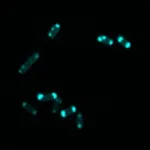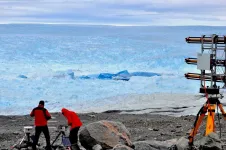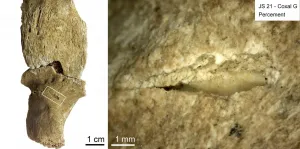Climate skeptics not easily persuaded by available evidence, now or later
Quantitative modeling by University of Oregon environmental economist predicts strong skeptics are unlikely to change their beliefs, even in the face of mounting evidence
2021-05-27
(Press-News.org) EUGENE, ORE. -- May 27, 2021 -- Climate skeptics who aren't persuaded by the existing evidence from climate change are unlikely to change their minds for many years, according to a newly published quantitative study by a University of Oregon environmental economist
The central question posed by the study published in the journal Climate Change was "How much evidence would it take to convince skeptics that they are wrong?" The answer depended on the degree of skepticism. The study modeled two types of hypothetical skeptics -- those who were less extreme and believed the change in temperature was slight, as well as more extreme skeptics who believed the change was nonexistent -- and exposed them to climate data recorded between 1866 and 2005, as well as future projections until the end of the century.
"If a climate sceptic is unpersuaded by the evidence that is already available to them today, my model implies that they will likely remain a skeptic for many years into future," said author Grant McDermott, an assistant professor in the University of Oregon Department of Economics interested in the interaction between human and natural systems. "Why? Because it suggests their prior beliefs are so strong that even decades of continued warming may not be enough to convince them."
Moderate skeptics on the other hand were highly likely to change their beliefs once given more evidence of recorded temperature change.
A secondary goal of the paper was to bridge competing theories of climate skepticism as a social phenomenon by looking closely at "source credibility" from the skeptic's perspective. In other words, McDermottt said, there is a need to acknowledge that many skeptics regard mainstream sources of climate science as untrustworthy. They may not trust scientists over their own sources, which in turn could help to explain why they don't update their beliefs as scientists provide more information.
"One implication of that is that if you're trying to think about who to target with messaging to persuade people that climate change is a real and observable phenomenon, you should just accept that some people you're just not going to convince, even with more years' worth of evidence."
Because McDermott employed a quantitative model, he calls the project "a grandiose thought experiment" that uses "hypothetical, stylized skeptics." While some climate scientists have employed complicated supercomputer models, McDermott's Bayesian mathematical model uses simpler, standard econometric techniques - bread and butter to environmental economists like him. At its essence, the model provides a framework for combining prior beliefs with new information and seeing how beliefs are updated.
McDermott suggests that further research could be directed to disentangle the root causes of strongly-held skeptic beliefs. Specifically, are skeptics extremely sure of their priors, or simply mistrustful of scientific sources about climate change? Or, perhaps it is some combination of the two?
"The actions of others may often seem irrational to us, and vice versa, but it's important to recognize that a person's actions are, more than likely, perfectly congruent with their internal belief system," McDermott said. "Acknowledging that is an important first step towards crafting effective public policy."
INFORMATION:
Links:
Paper in Climate Change: https://link.springer.com/article/10.1007/s10584-021-03089-x
About Grant McDermott: https://grantmcdermott.com/
Department of Economics: https://economics.uoregon.edu/
ELSE PRESS RELEASES FROM THIS DATE:
2021-05-27
While earlier research has mostly looked into factors such as fear, perceived risk, age and political views to determine what makes individuals and societies more or less willing to drastically change their lifestyle and support government-imposed strict restrictions, in order to mitigate the spread of the COVID-19 pandemic, psychologists at the University of Zurich Charlotte Kukowski, Katharina Bernecker and Veronika Brandstätter took a different perspective.
Instead, they chose to find out the impact of people's perception of others' behaviour when it comes to the public good, as well as people's own self-control in sticking to behaviour guidelines. By using data from the United Kingdom and Switzerland, they concluded that, ...
2021-05-27
AUSTIN, Texas -- In the perpetual arms races between bacteria and human-made antibiotics, there is a new tool to give human medicine the edge, in part by revealing bacterial weaknesses and potentially by leading to more targeted or new treatments for bacterial infections.
A research team led by scientists at The University of Texas at Austin has developed chemical probes to help identify an enzyme, produced by some types of E. coli and pneumococcal bacteria, known to break down several common types of antibiotics, making these bacteria dangerously resistant to treatment.
"In response to antibiotic ...
2021-05-27
New York, NY--May 27, 2021--While our facial expressions play a huge role in building trust, most robots still sport the blank and static visage of a professional poker player. With the increasing use of robots in locations where robots and humans need to work closely together, from nursing homes to warehouses and factories, the need for a more responsive, facially realistic robot is growing more urgent.
Long interested in the interactions between robots and humans, researchers in the Creative Machines Lab at Columbia Engineering have been working for five years to create EVA, a new autonomous robot with a soft and expressive ...
2021-05-27
Reanalysis of the prehistoric cemetery Jebel Sahaba (Sudan), one of the earliest sites showing human warfare (13,400 years ago), suggests that hunter-fisher-gatherers engaged in repeated, smaller conflicts. The findings are published in Scientific Reports. Healed trauma on the skeletons found in the cemetery indicates that individuals fought and survived several violent assaults, rather than fighting in one fatal event as previously thought.
Isabelle Crevecoeur and colleagues reanalysed the skeletal remains of 61 individuals, who were originally ...
2021-05-27
Shortly before Jakobshavn Isbræ, a tidewater glacier in Greenland, calves massive chunks of ice into the ocean, there's a sudden change in the slushy collection of icebergs floating along the glacier's terminus, according to a new paper led by the Cooperative Institute for Research in Environmental Sciences (CIRES) at CU Boulder. The work, published in Nature Geoscience, shows that a relaxation in the thick aggregate of icebergs floating at the glacier-ocean boundary occurs up to an hour before calving events. This finding may help scientists better understand future sea-level rise scenarios and could also help ...
2021-05-27
Since its discovery in the 1960s, the Jebel Sahaba cemetery (Nile Valley, Sudan), 13 millennia old, was considered to be one of the oldest testimonies to prehistoric warfare. However, scientists from the CNRS and the University of Toulouse - Jean Jaurès (1) have re-analysed the bones preserved in the British Museum (London) and re-evaluated their archaeological context. The results, published in Scientific Reports on May 27, 2021, show that it was not a single armed conflict but rather a succession of violent episodes, probably exacerbated by climate change.
Many individuals buried at Jebel Sahaba bear injuries, half ot them caused by projectiles, the points of which were found in the bones or the fill where the body was located. The ...
2021-05-27
What The Study Did: The findings of this systematic review and meta-analysis indicate that enhanced personal protective equipment is associated with low rates of SARS-CoV-2 transmission during tracheostomy.
Authors: Phillip Staibano, M.Sc., M.D., of McMaster University in Ontario, Canada, is the corresponding author.
To access the embargoed study: Visit our For The Media website at this link https://media.jamanetwork.com/
(doi:10.1001/jamaoto.2021.0930)
Editor's Note: The article includes conflict of interest disclosures. Please see the article for additional information, including other authors, author contributions and affiliations, conflict of interest and financial ...
2021-05-27
What The Study Did: This survey study of adults living Michigan during the COVID-19 pandemic examines associations between race/ethnicity, medical mistrust within racial/ethnic groups and willingness to participate in COVID-19 vaccine trials or to receive a COVID-19 vaccine.
Authors: Hayley S. Thompson, Ph.D., of the Wayne State University School of Medicine in Detroit, is the corresponding author.
To access the embargoed study: Visit our For The Media website at this link https://media.jamanetwork.com/
(doi:10.1001/jamanetworkopen.2021.11629)
Editor's Note: The article includes conflict of interest and funding/support disclosures. Please see the article for additional information, including other authors, author contributions and affiliations, ...
2021-05-27
What The Study Did: In this study of 1,597 Big Ten athletes who had comprehensive cardiac screening, including cardiac magnetic resonance (CMR) imaging, after COVID-19 infection, 37 athletes (2.3%) were diagnosed with clinical and subclinical myocarditis. Researchers report CMR screening increased detection of myocarditis, a leading cause of sudden death in competitive athletes.
Authors: Curt J.Daniels, M.D., and Saurabh Rajpal, M.B.B.S., M.D., of Ohio State University in Columbus, are the corresponding authors.
To access the embargoed study: Visit our For The Media website at this link https://media.jamanetwork.com/
(doi:10.1001/jamacardio.2021.2065)
Editor's ...
2021-05-27
CAMBRIDGE, MA -- Nitrogen, an element that is essential for all living cells, makes up about 78 percent of Earth's atmosphere. However, most organisms cannot make use of this nitrogen until it is converted into ammonia. Until humans invented industrial processes for ammonia synthesis, almost all ammonia on the planet was generated by microbes using nitrogenases, the only enzymes that can break the nitrogen-nitrogen bond found in gaseous dinitrogen, or N2.
These enzymes contain clusters of metal and sulfur atoms that help perform this critical reaction, but the mechanism of how they do so is not well-understood. For the first time, MIT chemists have now determined the structure of a complex that forms when N2 binds to these clusters, and they discovered that the clusters are able to weaken ...
LAST 30 PRESS RELEASES:
[Press-News.org] Climate skeptics not easily persuaded by available evidence, now or later
Quantitative modeling by University of Oregon environmental economist predicts strong skeptics are unlikely to change their beliefs, even in the face of mounting evidence



